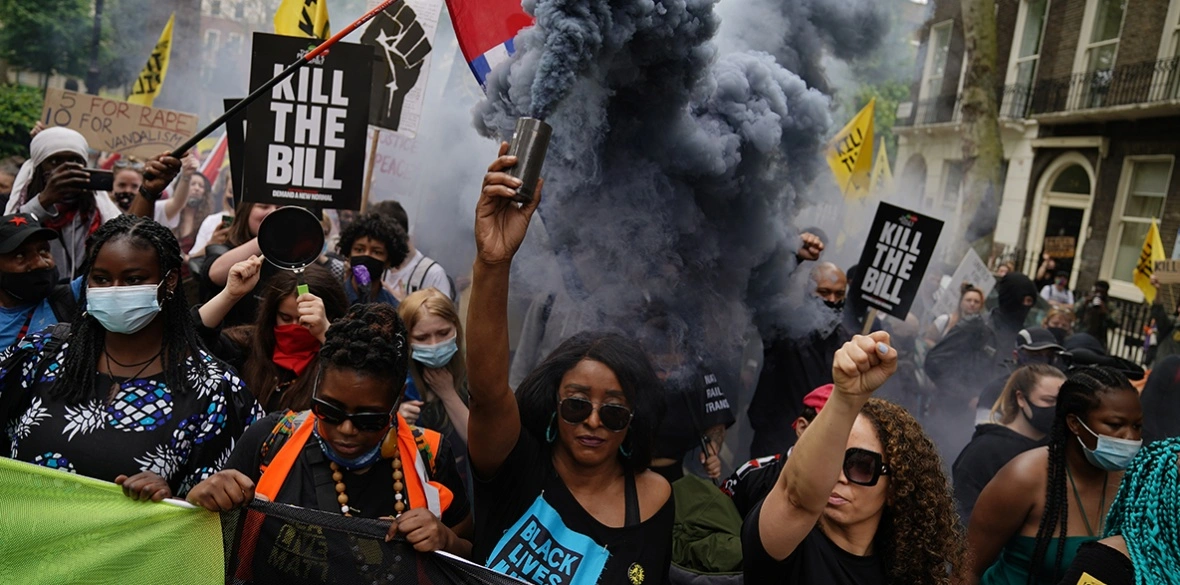Britain Entering a ‘Bleak New Era’ of Protest Crackdowns

Human rights charity Amnesty International has warned that Britain is entering a “bleak new era” of protest crackdowns, following the passing of new laws that give the police more powers to restrict protests.
In a new report, Amnesty International says that the Police, Crime, Sentencing and Courts Act 2022 and the Public Order Act 1986 give the police “sweeping powers” to restrict protests, including the power to impose conditions on protests, ban protests altogether, and arrest protesters without charge.
Amnesty International says that these new powers are “unnecessary and disproportionate” and that they “threaten to stifle dissent and undermine the right to peaceful protest.”
The report also highlights a number of recent examples of police using their new powers to crack down on protests, including the arrest of protesters at the Extinction Rebellion protests in 2022 and the detention of protesters at the Black Lives Matter protests in 2020.
Amnesty International is calling on the UK government to repeal the new laws and to ensure that the police use their powers in a proportionate and lawful manner.

Britain’s Record on Protest Crackdowns
Britain has a long history of respecting the right to protest. However, in recent years, the British government has taken a number of steps to restrict the right to protest.
One of the most significant restrictions on the right to protest is the Public Order Act 2013. This law gives the police the power to impose conditions on protests, such as requiring protesters to give notice of their protest in advance and restricting the location of protests. The law also gives the police the power to arrest protesters without charge.
Another significant restriction on the right to protest is the Police, Crime, Sentencing and Courts Act 2022. This law gives the police the power to ban protests that they believe will cause “significant disruption” to the public. The law also increases the penalties for protesters who found guilty of offences such as obstructing the police.
The Rise of Repression Globally
The rise of protest crackdowns is not unique to Britain. Governments around the world are increasingly cracking down on protests.
According to Amnesty International’s digital map, the number of governments that have cracked down on protests has increased by 50% in the past five years. The map shows that governments in all regions of the world are cracking down on protests, including governments in countries with a history of democracy and human rights.

Amnesty’s Digital Map
Amnesty International’s digital map shows the location and type of protest crackdowns that have occurred in each country in the past five years. The map also shows the number of protesters who have arrested, detained, or killed as a result of protest crackdowns.
The map is a powerful tool for understanding the extent of protest crackdowns around the world. It is also a valuable tool for activists and human rights defenders who are working to protect the right to protest.
Amnesty International says that its map shows a “worrying trend” towards the suppression of the right to peaceful protest. The charity is calling on governments around the world to respect the right to peaceful protest and to end their repression of dissent.
What Can Be Done to Protect the Right to Protest?
There are a number of things that can done to protect the right to protest.
One important step is to challenge laws and policies that restrict the right to protest. This could done through legal challenges, public campaigns, and other forms of activism.
Another important step is to support organizations that are working to protect the right to protest. These organizations provide legal assistance to protesters, monitor protests, and document human rights abuses.
Finally, it is important to speak out against protest crackdowns whenever they occur. By speaking out, we can help to raise awareness of the problem and put pressure on governments to respect the right to protest.

- Art
- Causes
- Best Offers
- Crafts
- Dance
- Drinks
- Film
- Fitness
- Food
- Games
- Festival
- Gardening
- Health
- Home
- Literature
- Music
- Networking
- Other
- Party
- Religion
- Shopping
- Sports
- Theater
- Wellness



